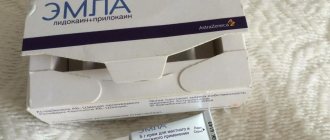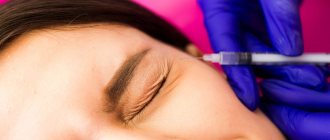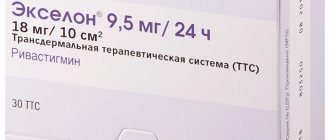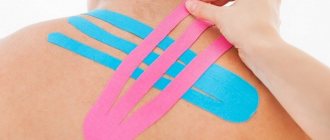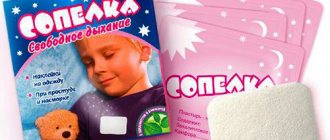Compound
One patch, 13.3-14.7 cm long, 9.5-10.5 cm wide, contains 700 mg of active lidocaine and the following inactive auxiliary compounds: 3367 mg of purified water, 2520 mg of glycerol ; 2800 mg sorbitol , 1400 mg polyacrylic acid solution 20%, 700 mg sodium polyacrylate, 700 mg sodium carmellose, 700 mg propylene glycol, 420 mg urea, 210 mg kaolin, 210 mg tartaric acid, 147 mg gelatin, 58.8 mg polyvinyl alcohol (75000), 32.2 mg aluminum dihydroxyaminoacetate (aluminum glycinate), 14 mg disodium edetate, 14 mg methyl parahydroxybenzoate, 7 mg propyl parahydroxybenzoate, 1750 mg nonwoven fabric and 742 mg plastic film (polyethylene terephthalate, PET).
Pharmacodynamics and pharmacokinetics
Versatis contains a local anesthetic - lidocaine , which is an acetamide with membrane-stabilizing activity and the ability to block sodium channels in excitable neuronal membranes. When used topically on undamaged skin, the expected therapeutic effect occurs - pain , without systemic influence.
Pharmacokinetic data
Approximately 3±2% of lidocaine from the total amount contained in the patch is adsorbed. Achieving a maximum blood concentration of 0.13 mcg/ml is possible by applying 3 patches over 12 hours. Binding to plasma proteins occurs by 50-80%.
Distribution is rapid (the half-life of the distribution phase lasts 6-9 minutes) begins with penetration into well-supplied tissues, then into adipose and muscle tissue.
Lidocaine is able to penetrate the blood-brain and placental barriers and is excreted in breast milk (approximately 40% of the concentration in a woman’s blood plasma). Metabolism occurs in the liver by 90-95%, taking into account the action of microsomal enzymes until the formation of pharmacologically active metabolites . Excretion through the kidneys and bile , with up to 10% eliminated unchanged.
Features of pharmacokinetics in special groups of patients
- In persons with liver disease, the metabolic rate is reduced to 10-50% of the normal value.
- With chronic renal failure , accumulation of metabolites is possible, while acidification of urine causes an increase in the excretion of lidocaine .
Versatis (plaster)
Pharmacodynamics
Versatis contains lidocaine, an acetamide derivative. The mechanism of action is related to the stabilization of neuronal membranes, which is believed to be the result of blockade of sodium channels.
When applied topically to intact skin, a therapeutic effect occurs sufficient to relieve pain.
Pharmacokinetics
Suction
With single or repeated use of the Versatis patch at the maximum recommended dose (simultaneous application of three patches for 12 hours), only 3 ± 2% of the lidocaine contained in the patch enters the systemic circulation. The concentration in blood plasma after using the maximum recommended dose of the drug in patients without clinical signs of postherpetic neuralgia was 84 - 125 ng/ml. In patients with postherpetic neuralgia - 52 ng/ml.
Distribution
The volume of distribution does not depend on age and is reduced in patients with chronic heart failure and increases in liver failure.
70% of lidocaine, which penetrates into the systemic circulation after cutaneous application, binds to blood plasma proteins. Penetrates through the blood-brain and placental barriers by passive diffusion.
Metabolism
Lidocaine is rapidly metabolized in the liver to form several metabolites. The main route of metabolism is N-dealkylation to form monoethylglycine xylidide (MEGC) and glycine xylidide (GK), metabolites that have less pharmacological activity than lidocaine and are present in lower concentrations. Metabolites are hydrolyzed to 2,6-xylidine, which is converted by conjugation to 4-hydroxy-2,6-xylidine.
It has not been established whether 2,6-xylidine has pharmacological activity, however, when studied in biological models, 2,6-xylidine has a potential carcinogenic effect. Kinetic analysis revealed that with daily applications for up to one year, the maximum concentration of 2,6-xylidine averaged 9 ng/ml. Lidocaine and its metabolites (monoethylglycine xylidide, glycine xylidide and 2,6-xylidine) do not accumulate in the body; equilibrium concentration is achieved within the first four days of use.
When the number of simultaneously used patches increases from one to three, the concentration of lidocaine in plasma increases more slowly than the proportional ratio.
Removal
Lidocaine and its metabolites are excreted in the urine (more than 85% in the form of metabolites, less than 10% unchanged). The main metabolite in urine is a 4-hydroxy-2,6-xylidine conjugate, accounting for approximately 70 - 80% of the dose excreted in the urine. The metabolite 2,6-xylidine is excreted in the urine in a concentration of less than 1% of the dose received. The half-life of lidocaine after skin application of the patch is 7.6 hours.
In case of cardiac, renal or liver failure, the elimination of lidocaine and its metabolites may be slowed down.
Contraindications
Versatis lidocaine patch is contraindicated:
- in case of violations of the integrity of the skin of the application site;
- with established hypersensitivity to lidocaine and other components of the patch;
- pregnant and breastfeeding mothers.
Should be used with caution
- in case of infectious or traumatic skin lesions at the intended site of application;
- in acute phases of diseases or in weakened patients;
- during therapy with class I antiarrhythmic drugs and other local anesthetics ;
- in pediatrics;
- in elderly people
Versatis
Locally, externally.
Dosed spray of the drug for local use: in dentistry, otolaryngology - 1-4 doses, for endoscopic and instrumental research methods - 2-3 doses, in obstetrics - 15-20 doses, gynecology - 4-5 doses, dermatology - 1-3 doses . The maximum dose is 40 doses/70 kg body weight. In dental practice in children, it is preferable to use it as a lubricant (to avoid frightening the patient when sprayed) by pre-impregnating a cotton swab.
Aerosol dosed for topical use: in dentistry for adults - 20 mg (2 doses), maximum dose - 30 mg (3 doses) over 1.5 hours or 200 mg (20 doses) over 24 hours; children - up to 3 mg/kg.
Gel for external use: applied to the skin surface as needed 3-4 times a day.
Gel of the drug for local use: for anesthesia of the mucous membrane of the esophagus, larynx, trachea, lubricate the outer surfaces of instruments intended for research; for superficial anesthesia of the oral mucosa, apply 0.2-2 g of gel with a sterile glass rod or a sterile cotton swab soaked in the gel; if anesthesia is insufficient, repeat after 2-3 minutes; the maximum dose for adults in 12 hours is 300 mg (6 g of gel); in urology for women - 3-5 ml of 2% gel lubricate the urethral mucosa before examination, for men before catheterization - 100-200 mg (5-10 ml of 2% gel), before cystoscopy for filling and dilatation of the urethra - 600 mg (30 ml 2 % gel) in 2 doses with an interval of several minutes (the distal urethra is temporarily clamped). The maximum dose is 600 mg (30 ml of 2% gel) for 12 hours. Children - up to 4.5 mg/kg.
TTS is applied to the painful surface for 12 hours, then a 12-hour break is taken. You can apply no more than 3 TTS at the same time. After applying the drug, do not touch your eyes and wash your hands.
In dentistry, to anesthetize the injection site, the drug gel is applied to the mucous membrane in the area of subsequent infiltration anesthesia at intervals of 2-3 minutes; for anesthesia when removing tartar, the gel is rubbed into the gingival margin and necks of the teeth for 2-3 minutes, after which the procedure is carried out; as a therapeutic dressing after removing tartar or curettage, the gel is applied to the gingival margin and fixed; in the form of applications, it is applied several times a day to the oral mucosa at the sites of aphthae and erosions.
Side effects
On the part of the immune system, the development of allergic contact dermatitis , manifested in the form of hyperemia at the site of application, skin rash , urticaria , itching , and there have also been cases of burning of the area of the skin exposed to the drug. Cases of angioedema .
Versatis, instructions for use (Method and dosage)
Dosage
The patch is glued to intact, non-inflamed dry skin in the area where pain - once a day for a maximum of 12 hours. It is possible to use no more than 3 patches at a time. If the plastic protective film has not been removed, the patch can be cut into the required number of pieces. The duration of treatment is up to 2–4 weeks; if the therapeutic effect is insufficient or is provided only by its protective properties, then treatment is stopped.
Features of applying the patch
The patch is applied externally and should be glued to the skin immediately after it has been removed from the sachet and the plastic film has been removed from the adhesive layer. It is recommended to cut the hair with scissors, but do not shave it off!
Attention! After gluing the patch, you should immediately wash your hands. Avoid contact of hands with eyes!
Disposal
Do not reapply a used patch. Since it contains an active substance that must be discarded immediately after removal, fold the patch in half with the sticky side facing in and make sure it is out of the reach of children and pets.
VERSATIS Lidocaine patch 5 patches #
Pharmacokinetics
With a single or multiple use of the Versatis medical patch at the maximum recommended dose (simultaneous application of three patches for 12 hours), only 3 ± 2% of the total applied dose of lidocaine enters the systemic circulation. The concentration in blood plasma after using the maximum recommended dose of the drug in patients without clinical signs of postherpetic neuralgia was 84 - 125 ng/ml. In patients with postherpetic neuralgia - 52 ng/ml.
The volume of distribution does not depend on age, decreases in patients with chronic heart failure and increases in liver failure. 70% of lidocaine, which penetrates into the systemic circulation after application to the skin, binds to blood plasma proteins. Lidocaine penetrates the placental and blood-brain barriers by passive diffusion.
Lidocaine is rapidly metabolized in the liver to form several metabolites. The main metabolic pathway is N-dealkylation to form monoethylglycine xylidide (MEGC) and glycyl xylidide (GC). Metabolites have less pharmacological activity than lidocaine and are present in lower concentrations. They are hydrolyzed to 2,6-xylidine, which is converted to conjugated 4-hydroxy-2,6-xylidine. It has not been established whether 2,6-xylidine has pharmacological activity, however, when studied in biological models, 2,6-xylidine has a potential carcinogenic effect. Kinetic analysis revealed that with daily applications for up to one year, the maximum concentration of 2,6-xylidine averaged 9 ng/ml. Lidocaine and its metabolites (MEGC, HA and 2,6-xylidine) do not accumulate in the body, and equilibrium concentrations are achieved within the first four days of use. When the number of simultaneously used patches increases from one to three, the concentration of lidocaine in plasma increases more slowly than the proportional ratio. There are no data on the metabolism of lidocaine in the skin.
Lidocaine and its metabolites are excreted by the kidneys. More than 85% of the dose is found in the urine in the form of metabolites or active substance. Less than 10% of the lidocaine dose is excreted unchanged. The main metabolite in urine is 4-hydroxy-2,6-xylidine, accounting for about 70–80% of the dose excreted in the urine. 2,6-xylidine is excreted in the urine in a concentration of less than 1% of the dose received. The half-life of lidocaine after skin application of the patch is 7.6 hours. In case of cardiac, renal or liver failure, the elimination of lidocaine and its metabolites may be delayed.
Pharmacodynamics
The mechanism of the analgesic effect of topical application of lidocaine in the form of a patch is associated with the stabilization of neuronal membranes, which, despite the decrease in regulation of sodium channels, leads to a decrease in pain.
Overdose
Taking in excess of doses of the drug Versatis is unlikely, but not completely excluded, because if used incorrectly, it is possible to achieve higher plasma concentrations that differ from the established norms for a therapeutic effect. of lidocaine as a local anesthetic may occur It is accompanied by the following symptoms:
- anaphylaxis;
- convulsions;
- tremor;
- depression;
- euphoria;
- stimulation of the central nervous system;
- headache;
- dizziness;
- feeling of fear;
- anxiety;
- visual impairment;
- tinnitus;
- bradycardia;
- hypertension;
- feeling of heat or cold;
- respiratory depression.
Actions taken in case of overdose
antidote for lidocaine . If suspicious symptoms are detected, the patch should be immediately removed, discarded and consult a doctor.
Versatis
Suction:
With single or repeated use of the Versatis patch at the maximum recommended dose (simultaneous application of three patches for 12 hours), only 3 ± 2% of the lidocaine contained in the patch enters the systemic circulation. The concentration in blood plasma after using the maximum recommended dose of the drug in patients without clinical symptoms of postherpetic neuralgia was 84-125 ng/ml. In patients with postherpetic neuralgia - 52 ng/ml.
Distribution:
The volume of distribution does not depend on age and is reduced in patients with chronic heart failure and increases in liver failure.
70% of lidocaine, which penetrates into the systemic circulation after cutaneous application, binds to blood plasma proteins. Penetrates through the blood-brain and placental barriers by passive diffusion.
Metabolism:
Lidocaine is rapidly metabolized in the liver to form several metabolites. The main route of metabolism is N-dealkylation with the formation of monoethylglycine xylidide (MEGC) and glycine xylidide (GK), metabolites have less pharmacological activity than lidocaine and are present in lower concentrations. Metabolites are hydrolyzed to 2,6-xylidine, which is converted by conjugation to 4-hydroxy-2,6-xylidine.
It has not been established whether 2,6-xylidine has pharmacological activity, however, when studied in biological models, 2,6-xylidine has a potential carcinogenic effect. Kinetic analysis revealed that with daily applications for up to one year, the maximum concentration of 2,6-xylidine averaged 9 ng/ml. Lidocaine and its metabolites (monoethylglycine xylidide, glycine xylidide and 2,6-xylidine) do not accumulate in the body; equilibrium concentration is achieved within the first four days of use.
When the number of simultaneously used patches increases from one to three, the concentration of lidocaine in plasma increases more slowly than the proportional ratio.
Removal:
Lidocaine and its metabolites are excreted in the urine (more than 85% in the form of metabolites, less than 10% unchanged). The main metabolite in urine is a 4-hydroxy-2,6-xylidine conjugate, accounting for approximately 70 - 80% of the dose excreted in the urine. The metabolite 2,6-xylidine is excreted in the urine in a concentration of less than 1% of the dose received. The half-life of lidocaine after skin application of the patch is 7.6 hours.
In case of cardiac, renal or liver failure, the elimination of lidocaine and its metabolites may be slowed down.
Analogs
Level 4 ATX code matches:
Markain
Scandonest
Emla
Naropin
Lidocaine
Ubistezin
Ultracaine D-S Forte
Ultracaine D-S
Ultracaine
Artikain
It is possible to use Lidocaine in other forms:
- 10% spray, a package of Lidocaine 38 g will cost 360-400 rubles;
- 10% solution for injection, 10 ampoules of 2 ml - approximate cost 29-40 rubles.
Versatis price, where to buy
You can buy Versatis (5 patches in a package) for 480-560 rubles.
- Online pharmacies in RussiaRussia
ZdravCity
- Versatis patch 700 mg 5 pcs. Teikoku Seiyaku Co.
Ltd. RUR 712 order - Versatis ttc 30 systems (5 transdermal systems in a pack of 6 sachets)Grunenthal GmbH
RUB 3,334 order
